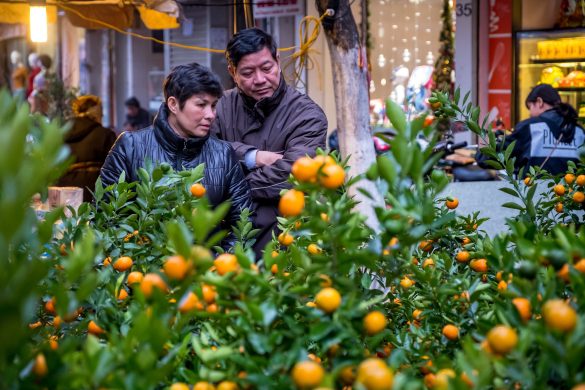From Lateu to Lirak- Pacific Island Villagers May Be First Climate Change “Refugees”
MONTREAL, 6 Dec.: A small community living in the Pacfic island chain of Vanuatu has become one of, if not the first, to be formally moved out of harms way as a result of climate change.
The villagers have been relocated higher into the interior of Tegua, one of the chains northern most provinces, after their coastal homes were repeatedly swamped by storm surges and aggressive waves linked with climate change.
The relocation, under a project entitled “Capacity Building for the Development of Adaptation in Pacific Island Countries”, underlines the increasingly drastic measures now underway to conserve low-lying communities as a result of the rise in human-made emissions to the atmosphere.
Details of the scheme were unveiled at a meeting organized by the UN Environment Programmes (UNEP) polar centre, GRID-Arendal in Norway.
The meeting, called “Many Small Voices”, is building bridges between vulnerable Arctic communites and those of small island developing States.
The meeting took place Tuesday during the 11th Conference of the Parties to the United Nations Climate Change Convention in Montreal, Canada.
Klaus Töpfer, UNEPs Executive Director, said: -The peoples of the Arctic and the small islands of this world face many of the same threats as a result of climbing global temperatures the most acute of which is the devastation of their entire ways of life.
– The melting and receeding of sea ice and the rising of sea levels, storms surges and the like are the first manifestations of big changes underway which eventually will touch everyone on the planet. The plight of these vulnerable peoples should be a clear signal to Governments meeting here in Montreal that we must hurry up if we are to avert a climate-led catastrophe for current and future generations, he added.
UNEP, in collaboration with others and with funding from the Global Environment Facility (GEF), is developing National Adaptation Programmes for Action or NAPAs in more than a dozen countries including Haiti, Liberia and Tanzania.
Other areas vulnerable to climate change are mountain regions where the melting of glaciers is creating huge lakes whose mud, soil and stone banks could burst sending huge quantities of water down gulleys and valleys.
The threat is underlined in the Himalayas where studies by UNEP in collaboration with the International Centre for Integrated Mountain Development (ICIMOD), have found some 50 glacial lakes that are of concern in Nepal and Bhutan.
The research, in collaboration with the Asia-Pacific Network for Global Change Research, is now being expanded into other areas of the Himalyas including Pakistan, India and China.
UNEP is looking to secure further funding for this iniative through the GEF to help to pin point more newly formed glacial lakes at risk of triggering so called GLOFs or Glacial Lake Outburst Floods and to develop early-warning systems for such potentially life- and infrastructure-threatening events.
The Case of Tegua
The relocation project, formally completed this August, involved over 100 villagers living in the Lateu settlement.
Over recent years the rates of flooding have increased, triggering a variety of problems including increased malaria and skin diseases among children as a result of more standing water for mosquitoes.
Erosion rates around the village had also accelerated to between two and three metres a year. The one-metre-high coral reef, the previous line of defence against high tides and waves, was being increasingly breeched.
Taito Nakalevu, climate change adaptation officer with the Secretariat of the Pacific Regional Environment Programme (SPREP), which carried out the work with funding from the Canadian Government, said that the villagers were moved to 15 metre higher ground, around 600 metres from the coast.
– We are seeing king tides across the region flooding islands. These are normal events, but it is the frequency that is abnormal and a threat to livelihoods. People are being forced to build sea walls and other defences not just to defend their homes, but to defend agricultural land, he explained.
The main relocation constraint for the Lateu villagers had been water, with the coastal strip having fresh water springs at low tides.
Under the project, water tanks able to harvest rain water have been supplied an installed in the interior. The six tanks are able to hold 6.000 litres each giving a total freshwater supply of 36.000 litres.
Other infrastructure, including roofing that feeds into the water tanks, has also been provided for the newly named settlement called Lirak.
– At least in the case of this community on Tegua we know that, for the next 50 years, the community of Lirak will be safe from floods, tsunamis and storm surges, added Mr Nakalevu, whose organization will be working closely with UNEP on future adaptation projects.
Information on the roundtable on the Arctic and the Small Island Developing States can be found at
www.grida.no/newsroom.cfm?pressReleaseItemID=972















